
Now, you’re probably heard the word constellation mentioned when people talk about the night sky. But what does that word mean? Well, constellation comes from the Latin word, ‘constellatio.’ Translated, it means set of stars! Now if you go back in time, before iPods, iPads, video games, Face-Time and Netflix. Okay, now go back even further, to a time of no TV, no phones…no electricity even! What did people even do for entertainment back then? Well one popular activity was star gazing. And without modern light pollution, you could see… a lot. Early civilizations looked at stars and told stories. Then they began to observe that the same set of stars could be seen at different times of the year, every year. Some of these constellations became the signs of the zodiac, our star signs. Different civilizations have different star stories, but here in the west, we are more familiar with the Greco-Roman Stories.
If you want to look for the constellations in the night sky, you’ll need a few things. A star map for one thing. If you don’t have one, you can find them on the internet. Then you need to look at the correct month of the year on the star map. After that, you’ll need a very dark night sky, (away from light pollution) and good eyesight, or good glasses!
Next try and match the constellations for the month on your star map, with what you see in the sky. You’re going to have to use your imagination and try to picture lines between the sets of stars, just like on the map. It’s helpful to have someone with you who already knows a bit about constellations, to help you pick them out.
Behind every constellation, there’s a story. Below I’ve outlined the myths behind a couple of the constellations.
Perseus
He was a great hero of Greek mythology. His father was Zeus (Jupiter in Roman mythology) and his mother was Danae. His most famous feat was the killing of the Gorgon Medusa. The Gorgon’s face was hideous, her nest a mass of writhing snakes. And one look from her would turn you to stone. So capturing her was not easy. But with a helmet of invisibility, a shield and winged sandals; all gifts from the Gods, Perseus managed to cut off her head. He then rescued the Princess Andromeda, who was chained to a rock, as an offering to a terrifying sea monster. After killing the sea monster, he married the princess. When he died, he was honored with his own constellation.
Hercules
The biggest hero of them all was of course Hercules. His father was lord of the Gods, Zeus himself (Jupiter in Roman mythology) and Alemena was his mother. Driven mad by Zeus’s jealous wife Hera, Hercules killed many people. He later made amends for these sins by completing the twelve labors of Hercules. These included killing the Nemean lion, stealing Cerberus the three headed dog and slaying the Hydra, a many headed monster. For all his mighty feats, he was rewarded with his own constellation. This shows him wearing the skin of the Nemean Lion, whilst carrying his club and the stolen three headed dog of the underworld.
Lyra
A small constellation in the northern hemisphere. It shows the lyre or lyra (a type of small harp). Arion was Poseidon’s son and a singer and musician: Poseidon was the Greek God of the Oceans. Neptune is the Roman equivalent. Such was Arion’s talent, he decided to go to Sicily to compete in a musical competition. He played the lyre and won many treasures. On the way home, treacherous sailors plotted to steal all his valuable awards and throw him overboard. Arion pleaded with them to let him sing and play one more time. They granted his wish and then pushed him overboard. Not knowing how to swim, he would have drowned. But his singing had attracted the attention of one of Poseidon’s dolphins. The dolphin carried him safely back to his home in Corinth. In honor of his talent Apollo – the Greek God of the Sun and Music- put the above lyre constellation in the night sky.
Next Post: Astronomy versus Astrology: How did the Zodiac Constellations become our Star Signs?
Evonne Blanchard is the author of, Amelia, the Moochins and the Sapphire Palace, Amelia, the Venutons and the Golden Cage and Amelia, the Merballs and the Emerald Cannon. These are the first three books in, Amelia’s Amazing Space Adventures, an
exciting series of ten books set in outer space (for children ages 6-10).
Ever wondered if aliens exist? What if one needed your help? Would you travel into outer space?
Now Available!
Book Three: Amelia, the Merballs and the Emerald Cannon
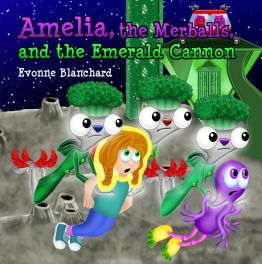
Amelia and Uglesnoo land on Mercury. They meet the Merballs, the friendly aliens that live there. All goes well until an asteroid hits their planet. Amelia and Uglesnoo find themselves in deep trouble. How will they convince the Merballs
of their innocence? And how will they manage to collect the flying shoes, escape Mercury and continue their quest to save Uglesnoo’s sister?
To preview and/or buy the book, click below:
“Adventure, inventiveness, and humor merge in this quirky, appealing tale.”
—Kirkus Reviews.
“…This third book is even more original, fun and creative! With aliens, different planets, a good dose of humor and excellent storytelling that is age-appropriate, this is one of the best kids series out there. The illustrations are pretty fun too and fit the story well.”
—I Heart Reading
Book One: Amelia, the Moochins and the Sapphire Palace
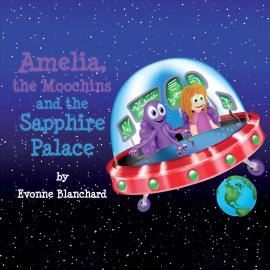
When is a present not a present? When it’s a friendly purple alien called Uglesnoo, from Pluto! Uglesnoo needs to leave right away for the Moon. Uglesnoo also desperately needs Amelia’s help. Should Amelia venture into outer Space?
To preview and/or buy the book, click below:
Or
“Appealing Illustrations combine with lots of text to make this a great read for children transitioning from picture books to chapter books.” —Kirkus Reviews
“The story is imaginative and fun…and a perfect book to stretch my oldest in his independent reading with something fun to keep his attention.” —Beautiful Books for Children
Book Two: Amelia, the Venutons and the Golden Cage

Uglesnoo needs Amelia’s help. His sister is very sick. The only cure is a repelling crystal from Neptune. With his Earthling friend, Amelia, they must continue their quest. More items are needed to buy the crystal. But Venus is full of danger and angry aliens. Are Uglesnoo and Amelia in over their heads?
“A lively sequel offers a sure-handed blend of fantasy, humor, adventure, and an ingenious heroine.” Kirkus Reviews
5/5 star rating! “Amelia, the Venutons and the Golden Cage is a wonderful children’s book that will allow your kids to get started in the Sci-Fi genre… The story is intriguing and well thought out. All in all, the author did a great job of creating an engaging story that kept my kids interested. We are definitely looking forward to the next book!”- Examiner.com
To preview and/or buy the book, click below:
or
Fun Space Facts for Children: Our Star Signs. The Story of Astrology versus Astronomy
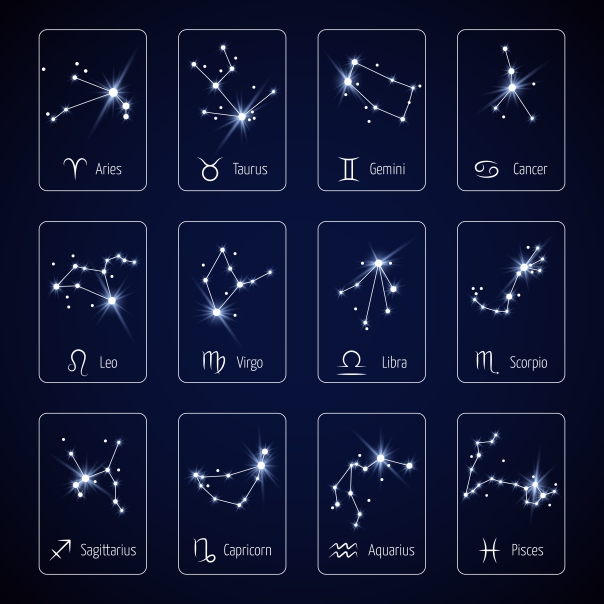
What’s your star sign? You probably already know it depends upon the month you were born. The star signs rotate through once a year, for a month at a time. We begin the year with the Water Bearer, Aquarius (January 20- February 18) and end it with Capricorn, the Goat, (Dec 22 – Jan 19). Right now the zodiac sign is Gemini and will be until June 20. In the next several posts, I’ll be explaining the fascinating story behind each star sign and how you can look for your star sign – which is also a constellation – in the night sky. Each star sign has a very interesting history. Do you know that the study of our star signs is called astrology? And did you also know that in ancient times, astrology was considered as important as astronomy is today. Ancient astrologers mapped the movements of celestial bodies, such as the planets and the constellations. From this they predicted human events and people’s personality traits; believed to be based on the alignment of the planets and stars at the precise moment of birth.
The Zodiac – which is a name for all twelve star signs – comes from the Latin term Zōdiacus, which in turn comes from the Greek- Zōdiakos Kyklos- meaning circle of animals: Half of the Zodiac constellations are animals!
Our star signs first came into being thousands of years ago. The ancient Babylonians started to notice how certain constellations rotated around every year. They started giving names to these constellations. The ancient Hebrews added to this ancient knowledge, as did the Egyptians, then the Greeks and the Romans. The astrologer and astronomer Ptolemy, of ancient Egypt was particularly important in laying the foundations of western astrology. In the middle ages (roughly 1100 – 1450) astrology and the zodiac signs became very popular. The star signs even made their way into major works of art like Angers Cathedral in France (see the photograph below).
Astronomy is the scientific study of the universe and everything in it; stars, planets, and galaxies. Nowadays it’s considered the only true science of space, whereas astrology is not taken seriously anymore. But many people still enjoy reading about their star signs (or horoscopes, as they are also known) and seeing if the predictions for the coming week will come true or not!
Angers Cathedral the South Rose Window of Christ (centre) with elders (bottom half) and Zodiac (top half). Mediaeval stained glass by Andre Robin after the fire of 1451. Credit: Wikipedia
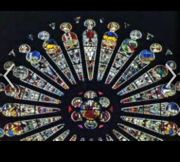
Next Post. Star Signs: Aquarius, the Water Bearer (Jan 20-February 18). The Story behind Aquarius and how to spot this Constellation in the Night Sky
Evonne Blanchard is the author of, ‘Amelia, the Moochins and the Sapphire Palace and ‘Amelia, the Venutons and the Golden Cage. These are the first two books in, ‘Amelia’s Amazing Space Adventures,’ an exciting series of ten books set in outer space (for children ages 5-9).
Ever wondered if aliens exist? What if one needed your help? Would you travel to outer space? For the adventures of a lifetime…
New Amelia, the Venutons and the Golden Cage: Book Two

Uglesnoo needs Amelia’s help. His sister is very sick. The only cure is a repelling crystal from Neptune. With his Earthling friend, Amelia, they must continue their quest. More items are needed to buy the crystal. But Venus is full of danger and angry aliens. Are Uglesnoo and Amelia in over their heads?
5/5 star rating! “Amelia, the Venutons and the Golden Cage is a wonderful children’s book that will allow your kids to get started in the Sci-Fi genre… The story is intriguing and well thought out. All in all, the author did a great job of creating an engaging story that kept my kids interested. We are definitely looking forward to the next book!”- Examiner.com
Click below for a preview:
Amelia, the Moochins and the Sapphire Palace: Book One
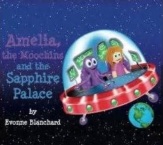
When is a present not a present? When it’s a friendly purple alien called Uglesnoo, from the planet Pluto! Uglesnoo needs to leave right away for the Moon. Uglesnoo also desperately needs Amelia’s help. Should Amelia venture into outer Space?
“Appealing Illustrations combine with lots of text to make this a great read for children transitioning from picture books to chapter books.” – Kirkus Reviews
“The story is imaginative and fun…and a perfect book to stretch my oldest in his independent reading with something fun to keep his attention.” —Beautiful Books for Children
Click below for a preview:
http://www.amazon.com/dp/1500496588
Or
http://www.amazon.co.uk/dp/1500496588